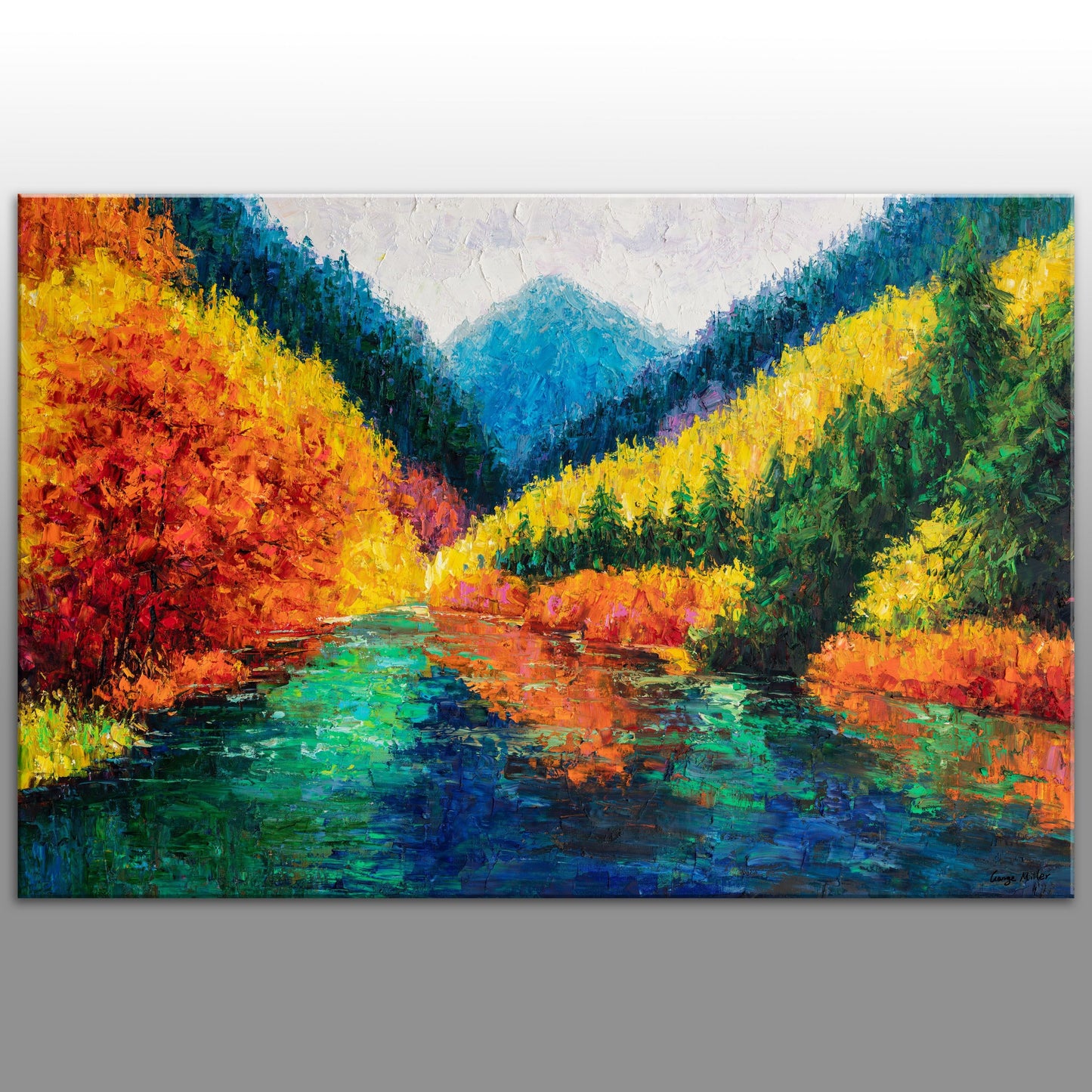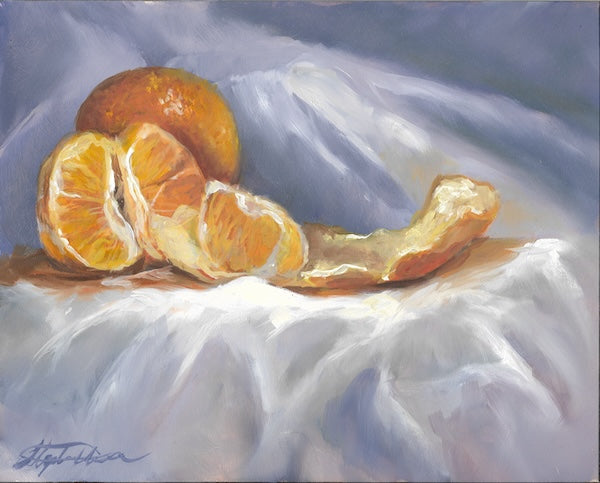Exhibit-Worthy Interior Pieces: Oil Paintings for Sale
Exhibit-Worthy Interior Pieces: Oil Paintings for Sale
Blog Article
Discovering Everything About Oil Paints: A Guide to Comprehending Their Appeal and Value
Oil paintings have actually mesmerized audiences for centuries, using a glance into the creative mastery of various eras. Their rich history is intertwined with ingenious strategies and extensive emotional expression. Comprehending the products and methods behind these art work can improve appreciation. Furthermore, the market for oil paints presents opportunities for collectors and financiers alike. As one discovers this fascinating globe, the inquiry emerges: what makes an oil paint really valuable?
The Background of Oil Paint: A Trip With Time
Oil painting has roots that date back to old times, it truly prospered throughout the Renaissance, when artists uncovered its versatility and rich shade capacity. Early examples can be mapped to the 7th century, with strategies developing notably throughout societies. The medium became prominent in Northern Europe in the 15th century, particularly through the works of musicians like Jan van Eyck, that originated its usage for comprehensive realism and vivid shades. This period marked a departure from tempera paints, enabling for better depth and structure. As oil painting spread, it influenced numerous musicians, resulting in work of arts by popular numbers such as Leonardo da Vinci and Rembrandt. The medium's tradition continues, forming the art world well into modern times.
Comprehending Oil Repaints: Materials and Techniques
As artists check out the world of oil paints, they experience a varied variety of products and methods that define this tool. The key components of oil paint include pigments, which give shade, and drying oils, such as linseed, that bind the pigments and promote application. Different ingredients can change the paint's texture and drying time, enhancing adaptability. Techniques like glazing, where transparent layers are developed, and impasto, which includes applying thick paint, enable various visual results. Furthermore, using brushes, palette knives, and even fingers can create unique appearances and finishes. Comprehending these methods and products enables artists to totally reveal their creativity and achieve the preferred influence in their artwork.
The Duty of Shade in Oil Paintings
Color plays a critical function in oil paintings, affecting both visual appeal and psychological resonance. Comprehending shade theory basics, consisting of the partnerships in between shades, can enhance an artist's ability to convey mood and environment. Additionally, understanding shade blending methods permits higher depth and richness in a painting's scheme.

Shade Concept Fundamentals
Understanding shade concept is important for musicians dealing with oil paints, as it develops the foundation for producing unified and aesthetically appealing structures. Color concept incorporates the research of just how shades interact, the color wheel, and the partnerships between key, secondary, and tertiary shades. Musicians use corresponding colors to boost contrasts and create centerpieces, while comparable shades promote unity and cohesiveness within an item. Additionally, the concepts of cozy and awesome shades affect the perception of deepness and room in a painting. Comprehending these principles enables artists to manipulate color effectively, directing the visitor's eye and interacting their designated message. Proficiency of color theory eventually enriches a musician's capacity to communicate feelings and concepts through their work.
Psychological Influence of Shade
The emotional influence of shade in oil paintings plays an essential role in exactly how visitors attach and view with artwork. Shades stimulate details feelings and state of minds, affecting the visitor's mood. For example, cozy colors like reds and oranges can develop a sense of warmth and energy, while awesome tones such as blues and greens usually stimulate peace or self-contemplation. Artists purposefully choose shade combinations to improve narrative components, assisting the audience's emotional journey. The saturation and contrast of colors even more intensify these results, drawing attention and developing emphasis. Eventually, the interaction of shades in oil paintings not only boosts their visual allure yet additionally works as an effective medium for emotional expression, improving the viewer's experience and interpretation.
Shade Combining Techniques
While lots of elements of oil painting contribute to the general make-up, understanding color mixing techniques is crucial for accomplishing desired impacts and deepness. Color mixing can be come close to through various methods, consisting of the additive and subtractive processes. Additive blending involves combining shades of light, while subtractive blending depends on pigments, where colors mix to produce new shades. Musicians often make use of a restricted combination to develop unified works, understanding the partnerships in between main, secondary, and tertiary colors. Strategies such as glazing and scumbling better enhance depth and brightness. By skillfully mixing colors, an artist can stimulate feelings, produce prime focus, and attain a sense of realism, inevitably elevating the paint's visual and emotional effect.
Famous Oil Painters and Their Iconic Functions

Famous for their proficiency of color and technique, oil painters have developed several of one of the most celebrated artworks in history. Distinguished musicians like Vincent van Gogh astounded audiences with his emotive brushwork in "Starry Night," while Claude Monet's "Impact, Dawn" laid the groundwork for Impressionism. Leonardo da Vinci's "Mona Lisa" remains an enduring symbol of imaginative genius, showcasing his skill in catching human expression. Rembrandt's "The Night Watch" highlights his cutting-edge use of light and shadow. Various other notable numbers include Pablo Picasso, that transformed modern-day art with his vibrant testing in jobs like "Les Demoiselles d'Avignon," and Georgia O'Keeffe, whose vivid representations of landscapes and flowers helped specify American modernism. Each artist's distinct style added greatly to the oil paint landscape.
Just how to Review the Quality of an Oil Paint
Assessing the high quality of an oil painting involves a mindful analysis of craftsmanship strategies, along with an analysis of color and structure. Observing brushwork, layering, and the application of paint get more info can disclose the artist's skill degree. In addition, the interplay of shades and the overall arrangement of elements add significantly to the paint's visual value.
Examining Workmanship Techniques
A thorough assessment of workmanship methods is vital for identifying the top quality of an oil painting. Evaluators ought to initially analyze the application of paint; thick, textured brushstrokes may recommend a knowledgeable hand, while overly consistent applications could suggest an absence of depth. oil paintings for sale. The layering strategy is likewise important; the existence of lusters and differed density can improve brightness and intricacy. Furthermore, the quality of the products used, such as the canvas and pigments, plays a significant role in toughness and general visual. Interest to information in aspects like sides and shifts between shades reflects the musician's dedication to their craft. Ultimately, these techniques add to the painting's emotional impact and market worth, acting as indications of the musician's ability and intent
Analyzing Color and Composition
While assessing the quality of an oil paint, one have to concentrate on the interaction of shade and structure, as these aspects are fundamental to the art work's total impact. Color selections can develop and evoke emotions state of mind; therefore, the artist's palette should be examined for harmony and contrast. A healthy make-up routes the viewer's eye and creates a sense of unity. Artists commonly employ techniques like the policy of thirds or leading lines to enhance visual interest. Furthermore, the use of light and darkness can add depth, enhancing the three-dimensionality of the painting. Inevitably, a successful oil paint weds shade and make-up, involving the audience and inviting a much deeper recognition of the musician's vision and technique.
Caring for and Preserving Oil Paintings
Correct care and preservation of oil paintings is essential for preserving their stability and long life. To protect these artworks, it is crucial to present them away from straight sunshine, which can cause fading and discoloration. Keeping a steady environment with regulated temperature level and moisture more aids in stopping damage. Cleansing ought to be done delicately using a soft, completely dry towel, preventing any type of rough chemicals that can damage the paint or varnish. Routine evaluations for signs of deterioration, such as flaking or fracturing, are suggested. When transferring or keeping oil paintings, correct extra padding and framing are necessary to stay clear of physical damage. Eventually, persistent treatment adds to the visual appeal and worth of oil paints gradually.
The Market for Oil Paintings: Accumulating and Investing
Comprehending the market dynamics for oil paintings is important for collection agencies and investors alike. The value of these artworks is affected by different variables, consisting of the musician's online reputation, historic relevance, and existing trends. Collectors commonly seek items that resonate personally while thinking about potential appreciation in value. Auctions and galleries work as primary venues for buying and marketing, with rates changing based upon demand and rarity. Buying oil paints needs study right into the market, as well as an understanding of credibility and provenance. Furthermore, emerging artists may supply possibilities for substantial returns, while established names can regulate high prices. Generally, a critical approach to gathering can generate both visual pleasure and monetary rewards.

Regularly Asked Questions
What Are the Environmental Effects of Oil Painting Materials?
The environmental impacts of oil painting products include the release of unpredictable organic compounds (VOCs), harmful waste generation, and source removal for pigments. These factors add to contamination and ecological deterioration, raising worries among environmentally mindful musicians and consumers.
Exactly How Do Different Canvases Influence Oil Paint Results?
Different canvases influence oil painting results considerably. Absorbency, surface area, and structure top quality can change paint application, drying out times, and color vibrancy. Musicians typically select specific canvases to achieve preferred results and boost their artistic expression.
Can Oil Paintings Be Recovered if Harmed?
Oil paints can indeed be recovered if damaged. Specialist conservators use different techniques to repair tears, clean surfaces, and address staining, ensuring that the artwork maintains its original beauty and worth for future generations.
What Are the Indications of an Original Oil Paint?
The indications of an initial oil painting include noticeable brush strokes, texture variations, and an unequal canvas weave (oil paintings for sale). In addition, authenticity might be verified through provenance, trademarks, and the visibility of a varnish layer unique to oil tools
How Has Technology Influenced Modern Oil Painting Techniques?
Modern technology has significantly affected modern oil paint methods by presenting digital tools for preparation, boosted products for appearance and longevity, and online platforms for marketing and sharing art, thereby expanding musicians' creative possibilities and target market reach. Oil painting has origins that date back to ancient times, it absolutely flourished throughout the Renaissance, when artists discovered its adaptability and abundant color possibility. The emotional impact of shade in oil paints plays a critical role in exactly how viewers link and regard with artwork. While lots of facets of oil paint add to the overall make-up, understanding color blending methods is vital for achieving preferred impacts and depth. Assessing the top quality of an oil painting entails a mindful analysis of workmanship methods, as well as an analysis of color and structure. While examining the high quality of an oil paint, one need to concentrate on the interplay of shade and structure, as these aspects are essential to the artwork's overall impact.
Report this page